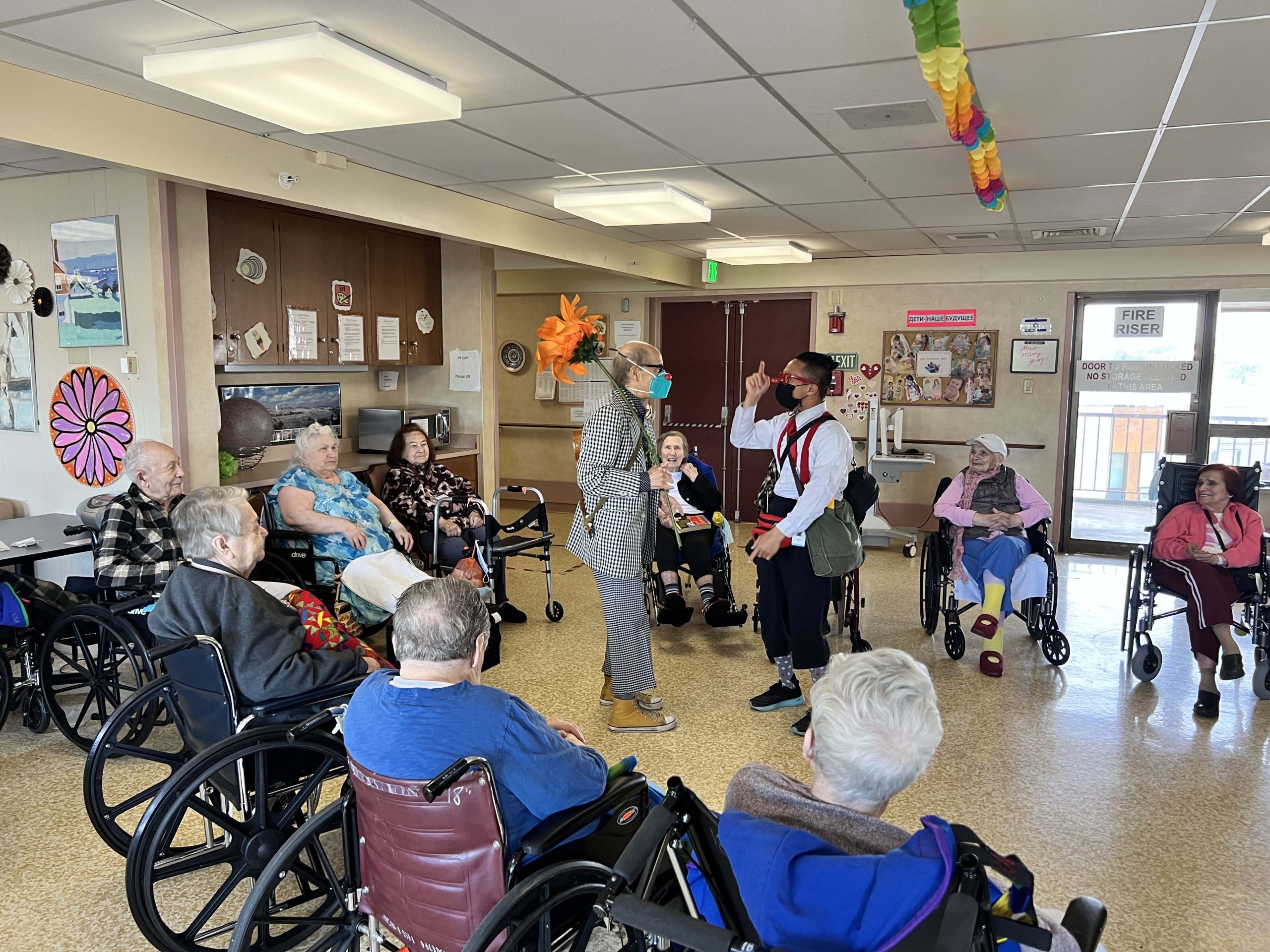Educator wrings inspiration from chaotic childhood and a classroom failure to show the power of storytelling in teaching and in life
Kate Farrell stood behind a lectern – “her refuge” – at a San Francisco junior high school in 1967 and peered out at the ninth-graders in her stuffy, overcrowded classroom. It was a hot spring day, right after lunch.
She had taken to reading to them from the assigned texts: The Arabian Nights, Old Yeller, Great Expectations and Greek mythology. It was her way of getting through to the many who couldn’t read. But as she stood there, bored herself and seeing the rows of glazed eyes, she was struck by the need for something new.
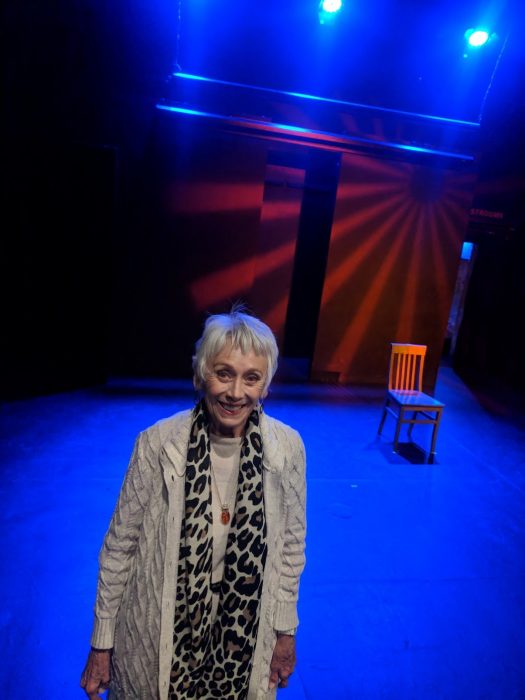
She stepped away from the lectern. The students looked at her with apprehension. And she began to tell a story – the tale of Daphne and Apollo, both struck by Cupid’s arrows – in her own words.
“The room changed. Suddenly there was nothing else in it except my words and the students’ eyes watching. They were transfixed; the most attention I’d ever received,” she said. “But at the same time, I knew they were not seeing me at all. They were seeing beyond me, into the myth – the far-off green forest of long ago with tangled foliage and splashing streams. I’ll never forget that day.”
An important discovery
Farrell feels she had made an important discovery that day, one worth sharing with other educators: Storytelling could be a valuable teaching tool.
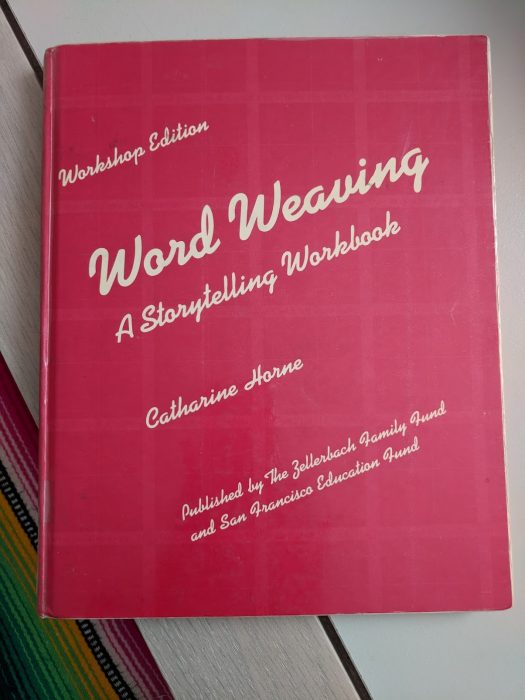
Years later while working as a librarian at a large San Francisco law firm, she meticulously crafted a language arts curriculum based around storytelling. It was implemented as the Word Weaving Storytelling Project from 1979-1991, in collaboration with the California Department of Education and the Zellerbach Family Fund.
Farrell’s training program for educators included the use of folk tales, literary tales, adaptations, original and true stories. And it spawned co-authored texts, workbooks, videotapes and educational materials, some of them purchased by companies like Scholastic and Highlights for Children.
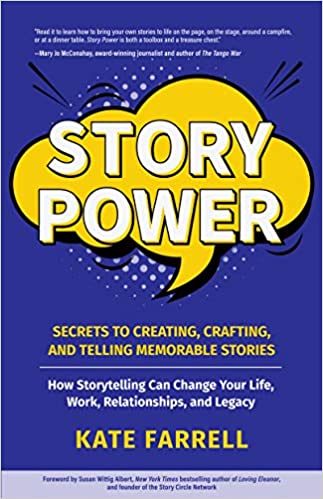
When the project ended, she went back to work as a librarian. But two years after retiring, she began writing again. Her book, “Story Power: Secrets to Creating, Crafting, and Telling Memorable Stories” was published last month, in her 79th year. A virtual workshop based on the book is planned Aug. 22 at the Mechanics Institute.
Farrell loves stories. And her own is no exception. Her father was also an educator but as a closeted gay fearful of exposure, he jumped from job to job, taking along Farrell, her brother and mother.
“We all angled our way on the edge, constantly moving and sometimes homeless, living in motels and with grandparents. By the time I graduated from high school in 1959, I counted 37 different moves in my upbringing.”
Although her upbringing was harsh, she said, it also steeled her determination.
Learning resilience the hard way
“My dad was gay during a time when he could have been committed or incarcerated. We all knew his secret,” she said. Still, she admired him. “He was brilliant, charismatic and handsome and able to nail a career in education. After reinventing himself many times, he became a college professor and specialist in testing and measurement for Hawaii’s Department of Education.
“In retrospect, he demonstrated the art of overcoming adversity with style,” she said. “From that I learned resilience, survival, and lack of dependence on material possessions. Dad empowered all his three children to be self-actualized, at home in the world.”
Farrell, too, went on to a successful career, as a teacher then librarian. Her personal life was more chaotic, but she overcame that, too. She went through four brief marriages and raised a son as a single mom from his first birthday through college. “I discovered that women during the 80’s and 90’s could have a child and a career, but not a relationship, especially given my independent spirit and my neurotic projections.”
But not to dismiss her determination. After developing the storytelling curriculum, she needed funding to take it further. Sitting around a kitchen table with her friend and former school principal, she pored through a photocopy of the entire Guide to Northern California Foundations.
The Zellerbach Family Fund seemed the right fit. It is focused on education, literary arts and underserved communities. Even today she thinks that it was more than coincidence that this foundation’s offices were only a few blocks from where she was working.
She walked over on her lunch hour to deliver her two-page “concept paper.” While talking to the receptionist, the fund’s director appeared, interrupted and invited Farrell into his office. And that was the start of the 12-year Word Weaving Storytelling Project.
On to another project
The contribution she made met with success. Studies with control groups in elementary classrooms showed significant improvement in students’ fluency, vocabulary, descriptive language, and recall, she said. She became an expert outside consultant.
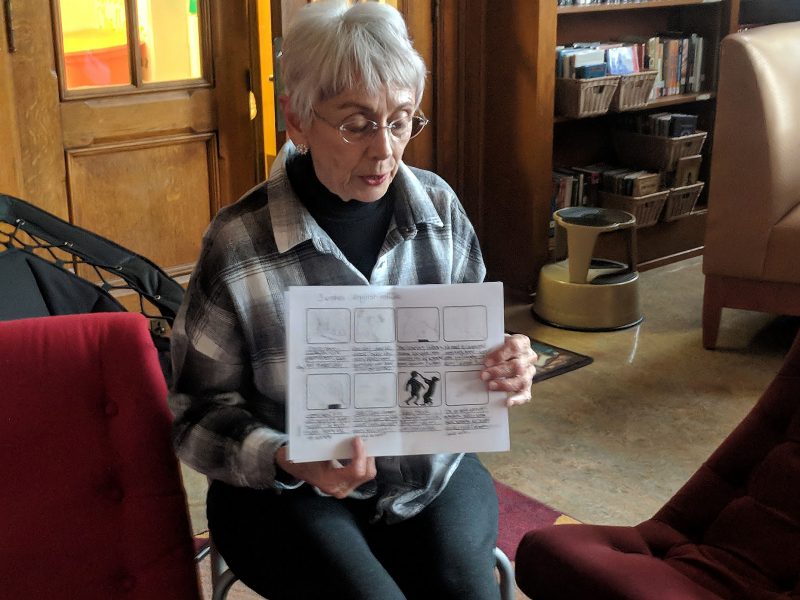
The program ended in 1993 due to funding cuts and other challenges. So, in 1996, Farrell went back to work as a librarian – in an odd quirk of fate the same San Francisco middle school where she’d begun teaching in 1966.
She retired two years ago: There was lots going on in the world of publishing and it was time to get moving. She had already served from 2012 to 2016 as president of the San Francisco chapter of Women’s National Book Association
“When I began to ponder my retirement years,” she said, “I returned to my passion project of storytelling and located the first book I wrote 40 years ago.” Encouraged by friends and family, she used her Bay Area writing network to propose and begin to write “Story Power.” Within six months, she’d signed with an indie publisher.
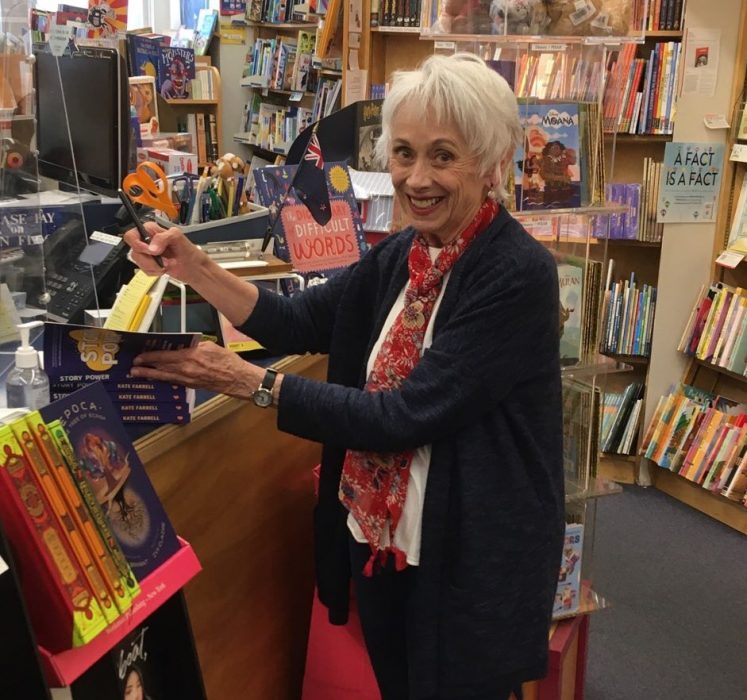
Farrell laments that Covid-19 restrictions keep her from being able to meet up with other storytelling enthusiasts at book signings or other large or small gatherings. So, she’s writing a blog three times a week, planning for virtual interviews from her South of Market residence.
A senior now herself, Farrell describes how storytelling can be beneficial to seniors.
“Family storytelling, shaping the legacy and family history through stories, is a wonderful way to contribute to family members’ identity,” she said. “It empowers generations and deepens roots. These stories provide children and grandchildren with values and influence their future.”
Even today, stories from her childhood still bring her hope, promise, even joy. Sitting in front of the Church of St. Peter and Paul, she recalled “The Girl In The Iron Shoes,” a fairy tale she learned at the age of nine. It’s about a young lass who had to wear iron shoes throughout her quest. The story, for Farrell, still speaks of the beauty of good will, perseverance and ultimate triumph.





